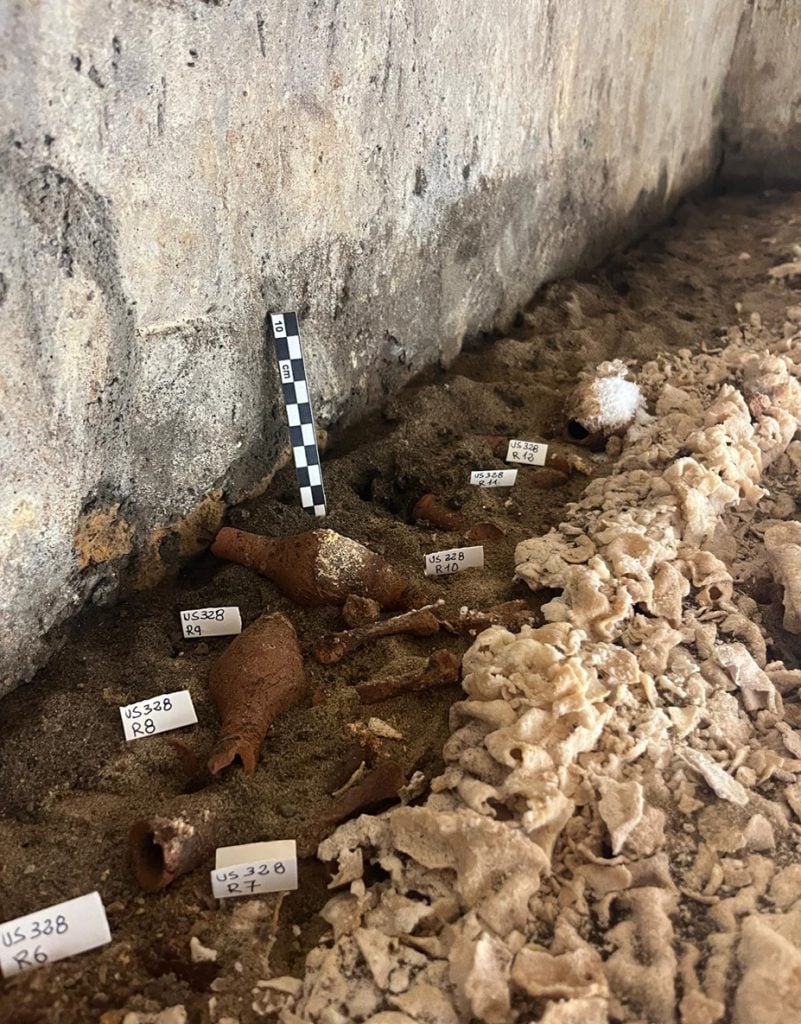Archaeology & History
2,000-Year-Sarcophagus Emerges From Famed Tomb of Cerberus
The tomb is named for the mythical three headed dog who guarded the underworld of ancient Greece.

The tomb is named for the mythical three headed dog who guarded the underworld of ancient Greece.

Adnan Qiblawi

Archaeologists have discovered a 2,200 year old incredibly well-preserved mummy at the famed Tomb of Cerberus in Italy.
The tomb was first discovered last year in the city of Giugliano, in northwest Naples near an ancient Roman necropolis. When archaeologists first discovered the sealed tomb, they fed a microcamera through its narrow cracks to peek at its interior. Intrigued by what they saw, they decided to unseal the stone tomb that had been locked away for an astounding two millenia.
They were thrilled to find walls painted with striking murals of mythological creatures, including icthyocentaurs—nautical centaurs who bear the torso of a human, the front legs of a horse, and a fishtail. The site was called the “Tomb of Cerberus” after the frescoes depicting the mythical three headed dog who guarded the underworld of ancient Greece.

A view inside of the area of the Tomb of Cerberus where the mummy was found. Courtesy of Superintendency for the Metropolitan Area of Naples; Ministry of Culture, Italy.
Recent excavations into the burial ground have also uncovered an impeccably preserved mummy. The body was found wrapped in a shroud with a variety of lavish goods surrounding him including jars of perfume and ointment, and an implement called a strigil which Romans used to scrape their bodies before bathing.
According to a translated statement from the Superintendency of Archaeology, Fine Arts and Landscape for the Naples Metropolitan Area, scientists from different fields are now collaborating at the site to uncover its secrets. A paleobotanist is examining the contents of the glass jars while a textile archaeologist is analyzing the shroud’s fabric to determine its yarn’s qualities and origins.

Details of vessels and other objects found inside the tomb. Courtesy of Superintendency for the Metropolitan Area of Naples; Ministry of Culture, Italy.
For now, researchers suspect the stone tomb was built by an influential family based on its lavish design. Based on the level of care given to preserve and honor the remains, they may have belonged to the progenitor of said family. As further excavations and analysis of the tomb continue, it is hoped that findings can provide insights into the social and cultural demographics of ancient Naples.
Research has so far discovered pollens which indicate that the mummy was rubbed with absinthe, wormwood, and goosefoot, ointments intended to preserve the body. Upcoming DNA results of the tomb’s occupant are expected to give some indication about the body’s ancestry and health conditions.